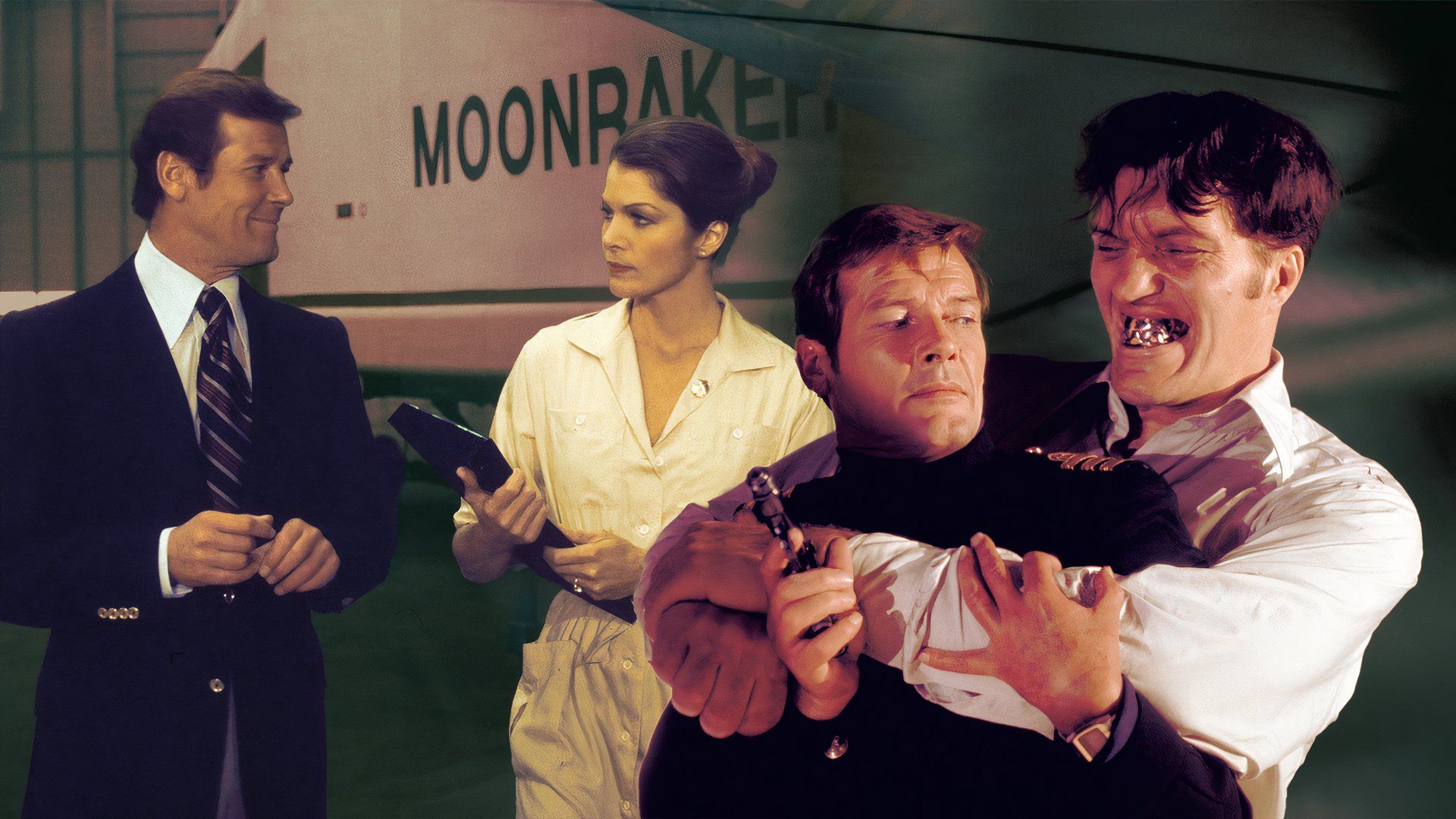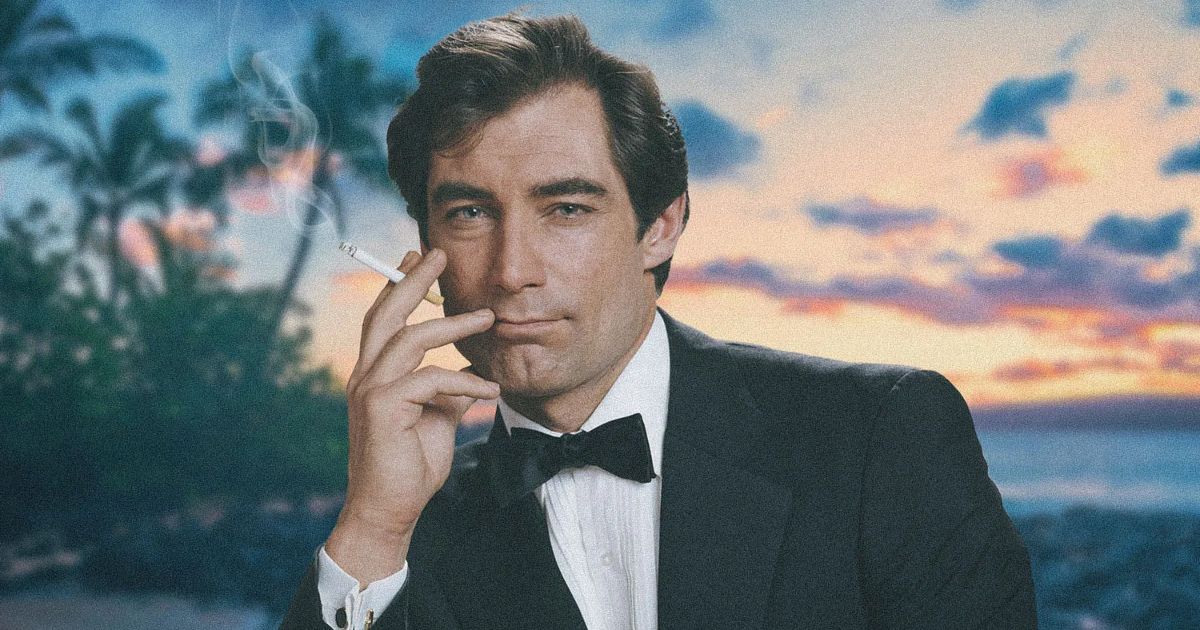Summary
- Moore’s Bond films were a cocktail of genres, veering from standard spy thrillers to supernatural and blaxploitation themes.
- The franchise broke tradition with slapstick humor and wild action sequences, making Moore’s tenure unique and memorable.
- Roger Moore faced off against formidable opponents, like Jaws, and delivered mind-blowing stunts like the AMC Hornet jump over a bridge.
On June 10, 1972, Roger Moore was announced as the new James Bond. Having previously starred as Simon Templar in The Saint and Lord Brett Sinclair in The Persuaders, he knew what it took to play a daring, fashion-savvy, lothario. Born in Stockwell, London, he was also as British as Bond actors come. Surprisingly, everyone always seemed to doubt him. For the 13 years that he was employed by the Broccolis, various critics constantly labeled his version of Agent 007 a buffoon. Others suggested he wasn’t as handsome or magnetic as Connery, opinions he disagreed with.
“I never saw what the fuss was about. Hundreds of actors have played Hamlet, so it should be the same with James Bond.”
During the search for the next actor to play the fictional spy, Moore wasn’t the straight pick for a successor either. The producers begged Connery to return and when they got tired of being told no, they tried Michael Billington, Jeremy Brett, and Julian Glover. Clint Eastwood was also offered the role despite being American, but he was gracious enough to turn it down, insisting that only actors born in the United Kingdom deserved to be Agent 007.
Ultimately, Roger Moore took over, putting a light-hearted spin on a character that normally meant business. Today, the actor’s Bond movies are still viewed with skepticism, but they are better than you remember.
Moore’s Bond Movies Were Tasty Cinematic Cocktails That Combined a Variety of Genres
Except for a gadget here and there, most Bond movies are standard spy thrillers. Moore’s films, on the other hand, are amalgamations of various genres. Live and Let Die was the first, maybe the only successful major studio attempt at answering the popular blaxploitation films of the ‘70s. It had a version of their soul and power – and effortlessly matched them for hardcore violence, style, and drugs.
Equally effective as a supernatural thriller, the film benefited from a bone-chilling performance by Geoffrey Holder as Baron Samedi, the henchman. Samedi practiced voodoo and was said to be immortal. Bond killed him satisfactorily only for him to appear again in the final minutes, laughing maniacally. To date, Dr. Kananga is also the franchise’s only major black villain.
Related
James Bond: Would a Younger 007 Be Good for the Franchise?
With 61 years and 25 films under the franchise’s designer leather belt, is it time to let a younger actor take on the iconic role of James Bond?
The Man with the Golden Gun followed shortly after. Forty years since it was first screened, the film has lost none of its power to thrill an audience and remains one of the most entertaining Bond films. It incorporates martial arts elements and has nods to sci-fi-related mutations. The villain, Scaramanga, is seen with three nipples, suggesting he might be a product of failed biology.
Not enough can be said about Moonraker, which goes full space opera and sees Bond channeling his inner Han Solo to great effect. Screenwriter Christopher Wood had a rough time adapting Ian Fleming’s celebrated novel while still catering to the studio’s wish to ride on the era’s sci-fi wave. Ultimately, he succeeded by dwelling only on the book’s key passages and trimming the characters.
Purists might frown at some of the changes Wood made to the original story. However, most are defensible and the opening sequence where Bond is pushed off of a plane by Jaws is a major improvement on the novel’s cliché intro where the agent watches Hugo Drax’s poker game.
The Moore Movies Broke Franchise Traditions and Dug Into Slapstick Humor
Roger Moore’s Bond stepped into ‘Rome’ several times, yet he never felt compelled to do as the Romans do. For starters, he had unique tastes in cars. He avoided the Aston Martin in favor of the Citroën 2CV 6, the Alpha Romeo GTV 6, and the iconic 1976 Lotus Espirit, which was useful both on land and water.
He never ordered the shaken Double Martini either. It was always ordered for him. Beyond that, he was a cigar man, a preference that made him appear classier than Connery’s version of the character. Most importantly, he was a funny guy.

Related
The Best James Bond Book Still Hasn’t Been Adapted to the Screen (Properly)
Despite being one of Ian Flemmings best works, the Moonraker that we see on the screen is drastically different from the source material.
In most Bond movies, it often feels like the story and characterization aren’t as important as the general air of absurdity presiding over the entire affair, but this isn’t the case for Moore’s tenure. From lavish sets to over-the-top villains, there is always something to complement the dominant goofiness. Each Bond can boast of having some of the funniest quotes in the franchise, but the Moore movies topped the rest in slapstick magic and no time was wasted in getting this underway.
Moore’s first outing, Live and Let Die, marked the move from gritty thrillers to more earnest, facetious, family-friendly comedies. In it, fans saw Bond dash across a pond while using the backs of alligators as stepping stones. He then killed the villain, Dr. Kananga, by inflating his body with a gas pellet.
Elsewhere, Scaramanga’s henchman, Nick Nack should have known better than to bother Bond. In The Spy Who Loved Me, he snuck up on the British spy on a boat as he was making love. Unbothered, Bond used a suitcase to trap the person of short stature before throwing him overboard. Such were the comical delights of Roger Moore’s movies.
Wild Stunts, Mind-blowing Action Sequences, and Formidable Opponents
Espionage is what the James Bond movies are about, but stunt work is the franchise’s undeniable strength, and Moore’s projects truly delivered. After all, no other Bond has fought a python either or done fisticuffs on the moon. Among the many hair-raising moments, the 360-degree corkscrew AMC Hornet jump over a broken bridge in The Man with the Golden Gun is still embedded in the brain. So good was this particular stunt that the producers patented it.

Related
Why Timothy Dalton Was the Right James Bond at the Wrong Time
Fate and timing conspired to prevent Timothy Dalton from being remembered as the best James Bond since Sean Connery.
More goodies could be found in Moore’s most critically acclaimed Bond film, The Spy Who Loved Me. Hardly anything in Hollywood at the time evoked the dignified yet moderately musty aura of geopolitics and the iniquities of capitalism more forcefully than this scrumptiously subversive entry. The Union Jack parachute dive in the opening sequence of the movie was quite an extravaganza, while the henchman, Jaws, triggers nostalgic smiles.
Moore’s Bond was always pitted against the toughest lackeys and Jaws proved to be the biggest and most interesting threat. Richard Kel’s force-of-nature performance in the film – an electrifying blend of visceral physicality and smoldering effectiveness – made the character a pop culture, as well as the actor himself.
Here’s hoping that as the years go by, Roger Moore’s Bond movies will be re-examined and appreciated as the gems that they truly are.




